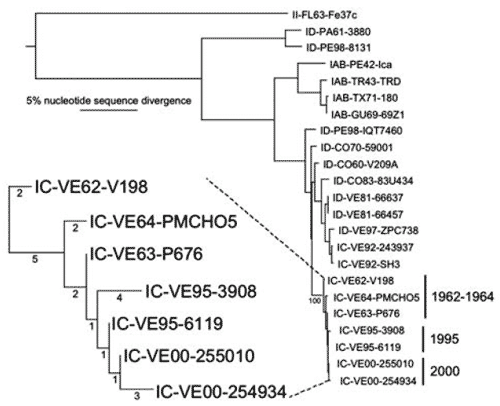Volume 11, Number 12—December 2005
Research
Postepizootic Persistence of Venezuelan Equine Encephalitis Virus, Venezuela
Figure 2

Figure 2. Phylogenetic tree generated from maximum parsimony analysis of genomic sequences of Venezuelan equine encephalitis virus (VEEV) strains 255010 and 254934 and homologous GenBank sequences from the 1962–64 and 1995 VEEV outbreaks, as well as other representative VEE complex alphavirus strains. Numbers indicate bootstrap values for groupings to the right. Enlargement on the lower left shows the 1962–64 and 1995–2000 clades, with numbers indicating nucleotide substitutions accompanying VEEV evolution.
Page created: February 02, 2012
Page updated: February 02, 2012
Page reviewed: February 02, 2012
The conclusions, findings, and opinions expressed by authors contributing to this journal do not necessarily reflect the official position of the U.S. Department of Health and Human Services, the Public Health Service, the Centers for Disease Control and Prevention, or the authors' affiliated institutions. Use of trade names is for identification only and does not imply endorsement by any of the groups named above.